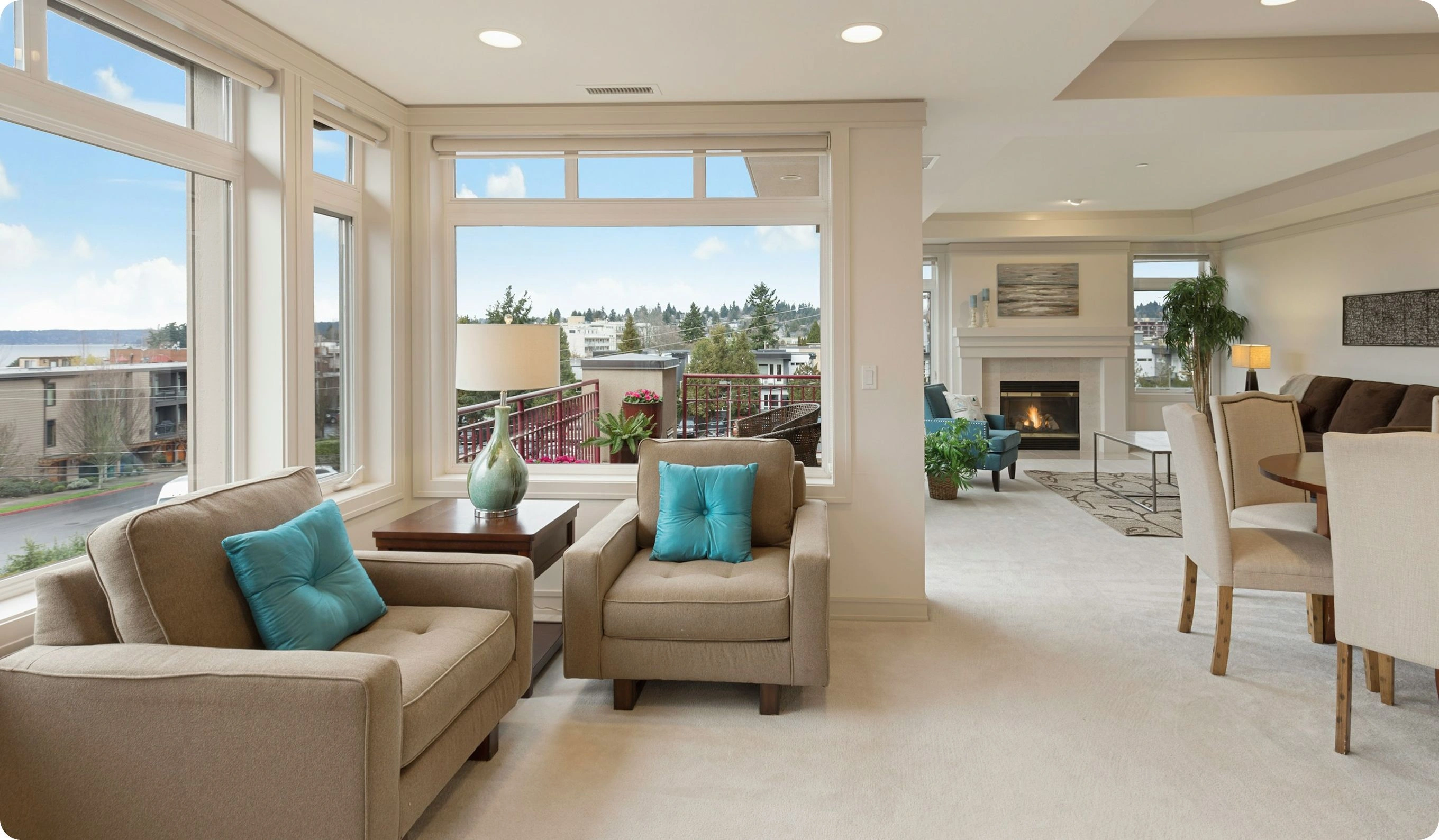Secondary Homes for Sale in TocumenAirport proximity, logistics hubsand new developments

Best offers
in Tocumen
Benefits of investment in
Panama real estate
Tax-friendly hub with international connectivity
Panama City is a logistics and financial center offering residency programs and no tax on foreign income — ideal for globally mobile investors.
Rental demand from expats and remote professionals
The city attracts digital nomads, entrepreneurs, and retirees seeking high-speed internet, services, and warm weather.
Property ownership with long-term security
Foreigners can fully own real estate, including land and apartments, with strong legal protections.
Tax-friendly hub with international connectivity
Panama City is a logistics and financial center offering residency programs and no tax on foreign income — ideal for globally mobile investors.
Rental demand from expats and remote professionals
The city attracts digital nomads, entrepreneurs, and retirees seeking high-speed internet, services, and warm weather.
Property ownership with long-term security
Foreigners can fully own real estate, including land and apartments, with strong legal protections.

Useful articles
and recommendations from experts
Main title about secondary real estate in Tocumen
Why secondary properties attract buyers
Secondary real estate in Tocumen gives buyers immediate access to fully commissioned, urban homes at the eastern gateway of Panama City. Rather than waiting through multi-quarter construction cycles and finish variability typical of off-plan projects, purchasers step into operating apartments, townhouses and single-family homes that are already connected to dependable utilities, mass-transit corridors and airport-anchored employment. This readiness compresses time-to-occupancy for end-users and time-to-income for landlords, while dramatically reducing execution risk and the variance between underwriting and real-world performance. In the resale segment, pricing is anchored by tangible attributes—orientation, cross-ventilation, acoustic exposure, daylight, floor-plan logic, parking practicality and the quality of building management—rather than brochure renderings or untested amenity promises. For investors focused on predictable cash flow, that difference matters: you are buying performance that can be observed, measured and stress-tested during diligence.
The Tocumen corridor strengthens the secondary proposition with transport and employment density that few districts can match. Panama Metro Line 2 links neighbourhoods to the wider capital in minutes, while the expressway network—most notably Corredor Sur and Corredor Norte—shortens cross-city commutes and connects residential belts to business districts such as Costa del Este and the city’s central avenues. Tocumen International Airport, the country’s primary passenger and cargo hub, anchors aviation, warehousing and last-mile logistics, supporting year-round labour demand across airlines, handlers, retailers, maintenance providers and service vendors. These fundamentals produce steady tenant pipelines that are not overly dependent on tourism cycles. VelesClub Int. layers disciplined sourcing, on-the-ground inspections and live rent benchmarking onto this foundation, presenting only those secondary assets that convert demand into durable occupancy with minimal friction.
At the property level, many resale homes incorporate targeted modernisation completed by prior owners: upgraded distribution boards and grounded wiring, pressure-regulated plumbing risers, efficient glazing on noise-facing elevations, inverter HVAC, LED lighting and durable kitchen and bath finishes designed for heavy use. Because these interventions precede acquisition, buyers avoid the early-life capex and downtime that often follow new-build handovers. For owner-occupiers, that means a calm move-in; for landlords, it translates into fewer service calls, better tenant satisfaction and faster renewals. Our underwriting reflects these operational realities, with expenses calibrated to actual building behaviour—elevator maintenance where applicable, common-area power, reserve contributions and cyclical plant replacement—rather than optimistic developer assumptions.
Established neighbourhoods
Tocumen organizes into a set of mature micro-markets with distinct advantages but shared fundamentals. The traditional town centre concentrates walkable blocks, local commerce and mid-rise buildings that appeal to families and professionals who value proximity to schools, clinics and everyday services. Westward toward Las Mañanitas, residential grids around Metro Line 2 benefit from quick platform access and a dense layer of buses and feeder routes, compressing door-to-work times and underpinning predictable leasing cycles. Eastward toward 24 de Diciembre, newer compounds and low-rise clusters introduce calmer streets, shaded pocket parks and unit layouts with balconies or patios for cross-ventilation—features that lengthen tenancy and reduce turnover costs. Closer to the airport perimeter and along Vía Tocumen, mixed-use corridors combine apartments above active ground floors with ready retail—grocers, pharmacies, banks and cafés—supporting car-light living for shift workers and commuters alike.
Beyond the immediate corridor, quick expressway links bring Costa del Este, business parks and seafront promenades into everyday reach without requiring a premium purchase price inside those districts. That catchment effect is a quiet advantage of Tocumen’s secondary stock: households and tenants can access premium employment nodes while paying secondary-market rates in well-connected neighbourhoods. Across all these pockets, municipal basics—paved access, storm drainage, street lighting, scheduled waste collection and routine public-realm upkeep—operate with regularity, reducing unplanned disruption for owners and tenants. VelesClub Int. grades streets against a standardized framework—fabric condition, envelope and systems, natural light, noise exposure, circulation, micro-amenities and mobility—to prioritise buildings and blocks where livability and rentability reinforce one another.
Who buys secondary real estate
Demand for secondary housing in Tocumen is broad and complementary. Resident families use the resale market to upsize into formal homes near schools, healthcare and reliable transport, seeking two- and three-bedroom layouts with lift access in mid-rises or patios in low-rise clusters. First-time buyers prioritise compact one- and two-bedroom units close to stations and arterials, valuing efficient kitchens, practical storage, sound insulation and the security of staffed lobbies. Corporate transferees and professionals attached to aviation, cargo and logistics lease furnished apartments with quiet exposure, strong broadband and predictable travel times. Airline crews and rotating contractors prefer buildings with transparent access control, parcel handling and facility maintenance that runs to schedule. Lifestyle buyers mix periodic personal use with compliant medium-term leasing to smooth cash flow between visits. Across profiles, motivations converge on three pillars: immediate habitability, reliable civic networks and transparent operating costs.
These buyer motivations translate into tenancy patterns that secondary assets serve especially well. Transit-proximate stock leases faster and renews at higher rates because commute savings are quantifiable. Apartments with dual-aspect living rooms, usable balconies and vented bathrooms outperform on comfort during Panama’s humid months. Buildings with funded reserves, timely elevator servicing and clear service-charge accounting produce fewer surprises and sustain stronger lifetime yields. VelesClub Int. screens candidate assets for these practicalities, rejecting “cosmetic wins” that photograph well but live poorly—awkward kitchen triangles, dark corridors, noise-heavy exposures or governance gaps that erode returns after acquisition.
Market types and price ranges
The secondary inventory spans an accessible continuum. Entry-level assets include studios and compact one-bedroom apartments in walk-ups or modest lift-served buildings near stations and trunk roads; they appeal to singles, couples and weekday commuters and are typically the quickest to lease thanks to manageable monthly outlays. The core family stock consists of two- and three-bedroom apartments in mid-rises and attached townhouses in residential grids; these deliver the most balanced mix of space, budget and adjacency to schools, parks and supermarkets. At the premium edge of the Tocumen corridor, larger townhouses and single-family homes with terraces or small gardens sit on quieter streets within a short drive of the airport and expressways, attracting multi-year households and executives who value outdoor space and cross-ventilation.
Price bands reflect a matrix of variables: elevation and daylight, acoustic treatment, envelope performance, stair versus lift access, balcony usability, parking convenience and governance quality in the homeowners’ association. Rather than chase top-quartile asking rents, resilient strategies focus on defensible price-to-utility ratios—kitchens that cook comfortably, bathrooms that vent properly, closets that clear circulation and storage that removes clutter from living areas. Units that meet those tests experience fewer vacancy days and lower refresh costs between tenancies. For portfolio scale, small multi-unit properties—four to eight doors—near stations and employment corridors deliver diversified cash flows and lower vacancy risk when professionally managed. VelesClub Int. underwrites conservatively with expense reserves for service charges, building insurance, routine HVAC servicing, paint cycles, minor appliance replacement and prudent allocations for common-area capex, so pro-forma and reality stay closely aligned.
Legal process and protections
Panama’s conveyancing framework provides clear guardrails for secondary acquisitions. Transactions typically move from a negotiated promise to purchase to a public deed executed before a notary and then to registration at the Public Registry, where title is perfected against third parties. Legal due diligence confirms chain of title, checks for liens, encumbrances and judicial annotations, and ensures that cadastral descriptions match physical reality. Municipal certificates of good standing for property taxes and utilities are obtained so legacy arrears do not follow the asset. In condominiums, buyers review homeowners’ association bylaws, meeting minutes, financial statements and reserve levels to understand governance quality, service standards and likely future contributions. Where furniture and appliances are included, a signed inventory accompanies the deed so handover is unambiguous.
Technical diligence proceeds in parallel. Inspectors assess structure, roofs and façades; test electrical safety—grounding, breaker sizing and outlet loads; verify plumbing pressure and drainage; evaluate window sealing and acoustic performance on traffic-facing façades; and review elevator maintenance and fire-safety systems where applicable. For buildings near flight paths, sound attenuation and glazing quality receive special attention during our surveys. Funds transit through controlled accounts; at completion, the notary formalises the deed and presents it for registration, while meter readings, access devices and parking assignments are documented to avoid post-closing disputes. VelesClub Int. coordinates the sequence end-to-end—document collection, legal and technical opinions, insurance placement and utility transfers—so onboarding from offer to occupancy remains predictable for both domestic and international clients.
Best areas for secondary market
Performance concentrates where mobility and daily needs intersect. Transit-proximate belts around Metro Line 2 produce the shortest marketing cycles and the most resilient renewals because tenants can monetise commute savings immediately. Mixed-use corridors along Vía Tocumen balance heritage proximity with practical access for vehicles and services, enabling flexible lease structures attractive to rotating professionals and shift workers. Residential grids in the Las Mañanitas and 24 de Diciembre directions offer calmer streets and family-friendly layouts with shaded balconies and pocket parks, supporting longer tenancies and lower turnover costs. Closer to the airport perimeter, properties with thoughtful acoustic treatment and efficient climate strategies can command modest premiums while maintaining steady occupancy when paired with professional management.
Across all archetypes, assets outperform when specification aligns with lived reality: measured acoustic isolation, efficient heating and cooling with inverter systems, reliable water pressure, corrosion-resistant fixtures, logical storage and building management that communicates clearly and responds quickly. Our street-level diagnostics—sun paths, wind corridors, noise maps and traffic flows—guide clients toward pockets where day-to-day comfort supports sustained rent and liquidity. Because the Tocumen corridor is evolving, VelesClub Int. also monitors planned infrastructure works and zoning changes to avoid negative externalities and to position clients near future improvements rather than construction impact.
Why choose secondary over new + VelesClub Int. support
Selecting a secondary property in Tocumen solves three core problems at once. First, it removes timeline risk: the asset exists, operates and can be occupied or rented shortly after closing. Second, it reduces specification uncertainty: acoustics, ventilation, water pressure, daylight and building-management responsiveness are tested in real conditions during diligence rather than inferred from renderings. Third, it optimises capital allocation: instead of underwriting developer premiums and defect-liability periods, owners direct funds to targeted enhancements with clear comfort and rentability payoffs—window sealing, shading and lighting layers, storage systems, water-pressure stabilisation, smart locks and network improvements. Character and context in established neighbourhoods also strengthen long-term desirability and protect exit values.
VelesClub Int. amplifies these structural advantages with an end-to-end platform. We source beyond the open market to include thinly traded listings, conduct on-site inspections that document envelope and systems, benchmark against live lease comparables and underwrite cash flows with conservative expenses and realistic vacancy. Our legal and technical teams coordinate documentation, registration verification and compliance checks on prior works, negotiating seller contributions for cure items where appropriate. Post-closing, our operations desk handles tenant placement aligned with local regulations, preventive maintenance, service-charge reconciliation and transparent reporting. Owners receive dashboards consolidating occupancy, arrears, work orders, capex and benchmarks, enabling informed adjustments without day-to-day involvement. The result is a quiet compounder: a secondary asset in Tocumen that produces resilient cash flow, preserves capital and remains liquid inside a transit-linked, airport-anchored market that rewards disciplined selection.
